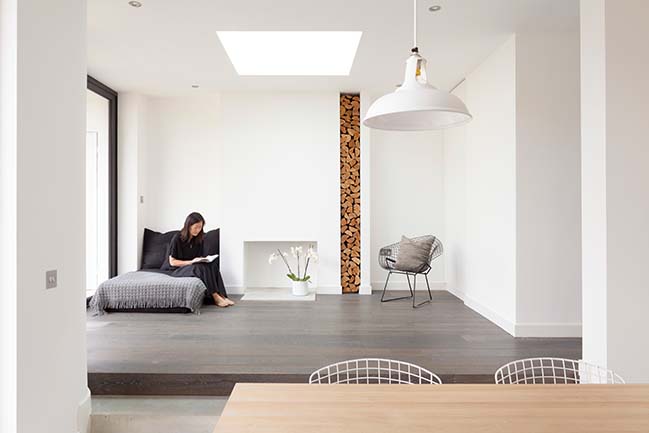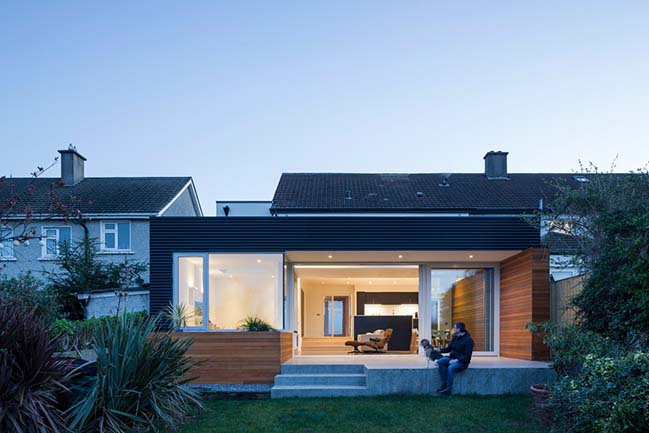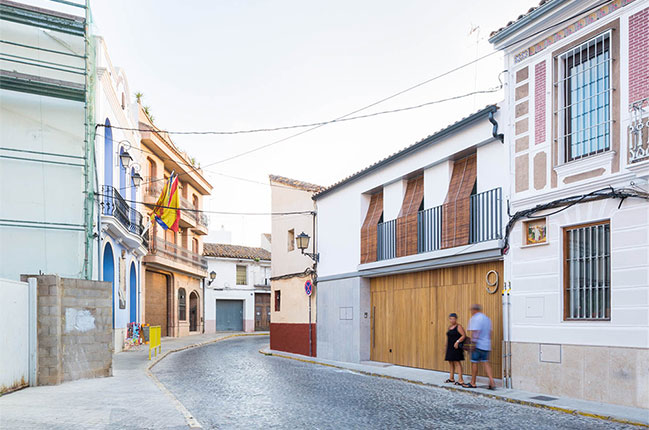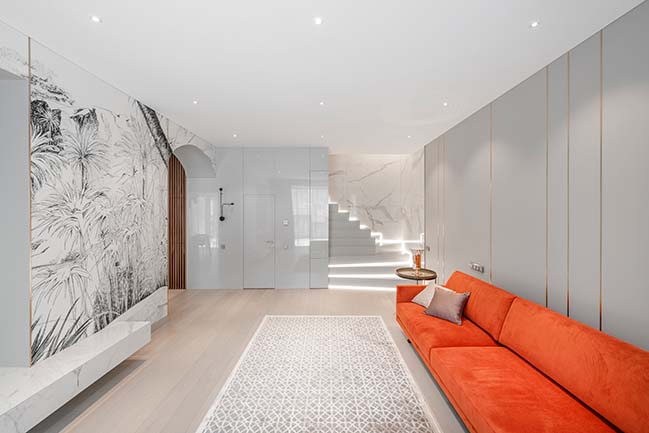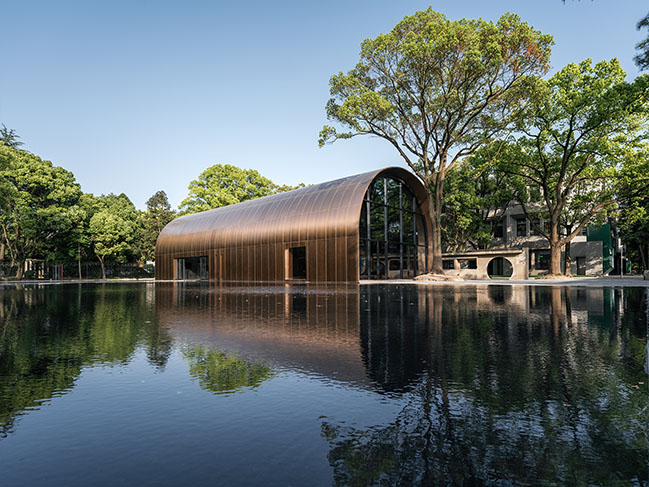08 / 18
2019
In the city, we long for the sky; we long for the grass. We long to feel the drops of rain on our cheeks. We long to feel the sun on our skin. On this site, we have created a new environment in an urban world, full of possibilities. It is our goal to revive the city through these spaces, by providing a safe place for a person to relax in.
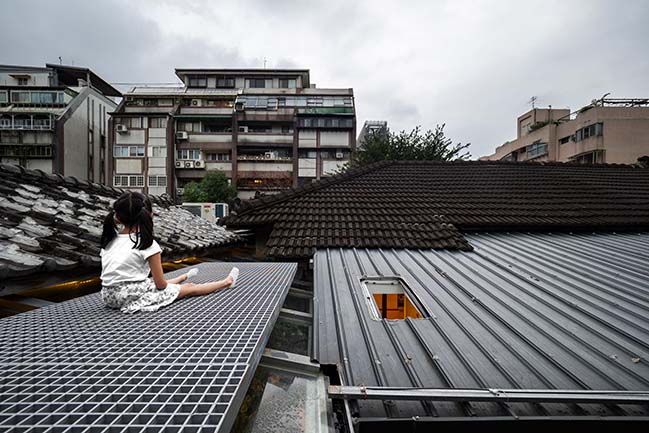
Architect: J.C.Architecture
Client: JCA Living Lab
Location: Taipei, Taiwan
Year: 2019
Built area: 223 sq.m.
Lead Designer: Johnny Chiu, Nora Wang
Designer: Marisa Cheng
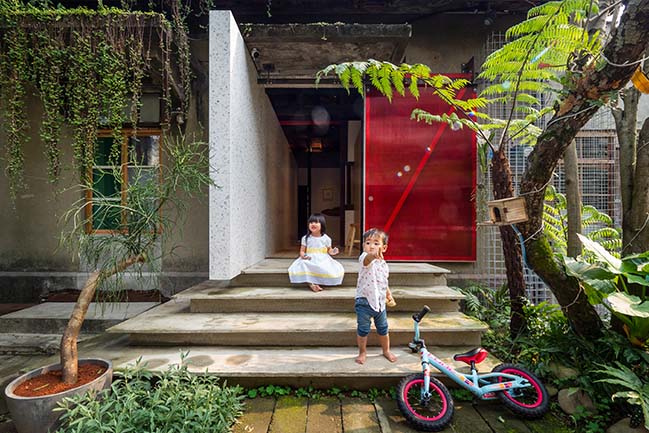
From the architect: We explored the ratio between children and adults, streets and cities; the concept of sensing the exterior from the interior; the idea of experiencing the street from a singular residential unit. On the block that reciprocates to the city, we conducted an experiment related to time; the layering of different era. Beginning from the era where the Japanese occupied, to development after the establishment of the Taiwanese government, to the 10-year famine that took place, we left traces of all these historical events in the design. The use of Japanese wood, the traces of single dormitory in the 50s, the vines that grew in the backyard – let the future be built on these foundations.

There is a story in the decaying wooden buildings of ninety years. It is our vision to find a new way to use a piece of land. It does not have to be perfect. It does not express more than what is needed. It is just enough to breathe life into an old space. With the evolution of society, we are torn between evolving and remaining the same. Analyzing the lifestyle of modern families and then attempting to contain it in an historical living space is like learning to talk to elders. There are things that should be preserved, and things that should be changed. Instead of just dwelling on the past, it is our goal to bring history forward into the future.
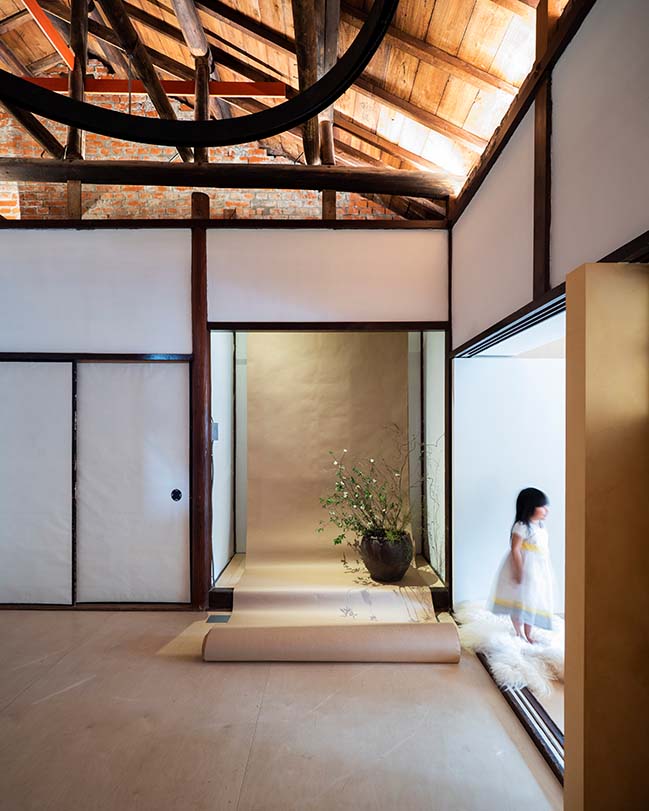
A 312cm-tall stone wall separates the public spaces from the private. With the Japanese private house as the main space in the residential space, additional public space were added in the 50s, including a public kitchen and living room as well as a flexspace for public meetings that take space. The clean and modern materials create a strong contrast between modern times and historical times. Exploiting this contrast, the insertion of the door into the wall symbolizes the infusion of a new energy into the existing.
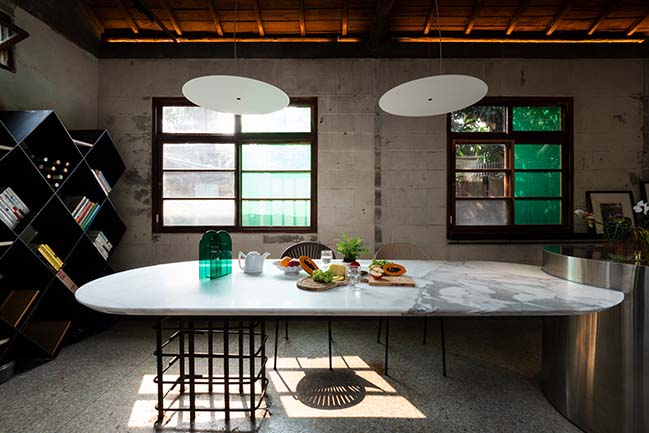
Children have always been the main focus in a space. We give them space to let them jump and run freely. Every space is both a place to walk and a place to stop; a place to open and a place to close. The arrangement of spaces is what creates connections and interactions. The master bathroom is connected to the main living space, backyard and kitchen-dining area. The tub has become the element for summer external activities. The greenery plays a role in creating spatial fluidity where the sunlight and wind flows through it. The skylight of the roof shapes a light path, and carries a majestic tree and acts as a guide for the house, from the beginning to the end. The exterior red staircase reaches up to the roof, connecting the ground to the sky, and even the block to the city.
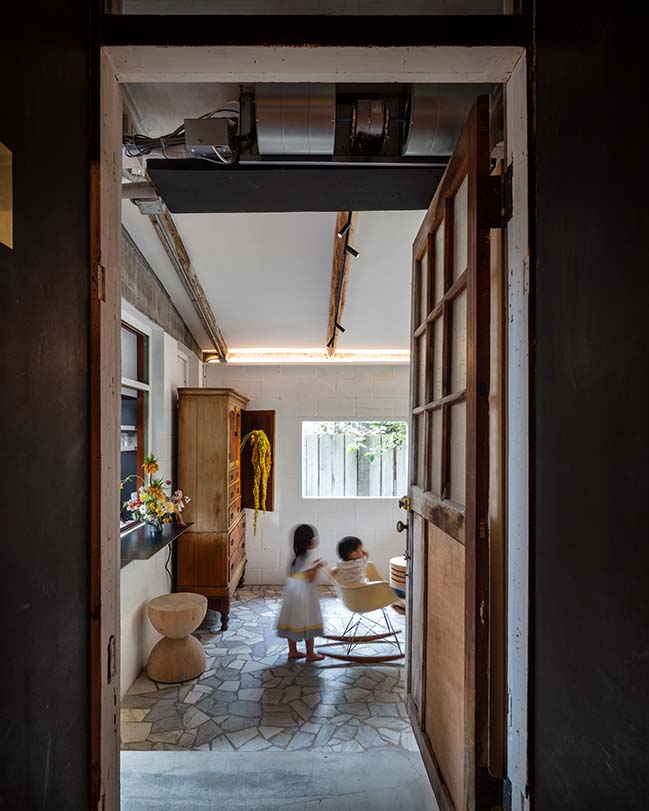
This is a design project that never ends, a place full of life and energy and a place for innovation and experiments. And we are not the only ones who get to design it.
[ VIEW MORE HOUSES IN TAIWAN ]
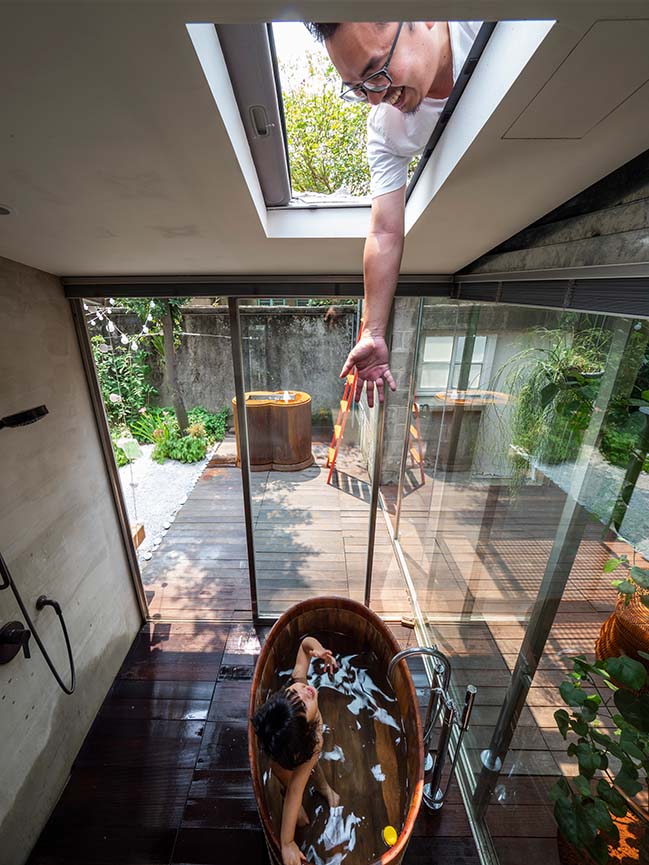
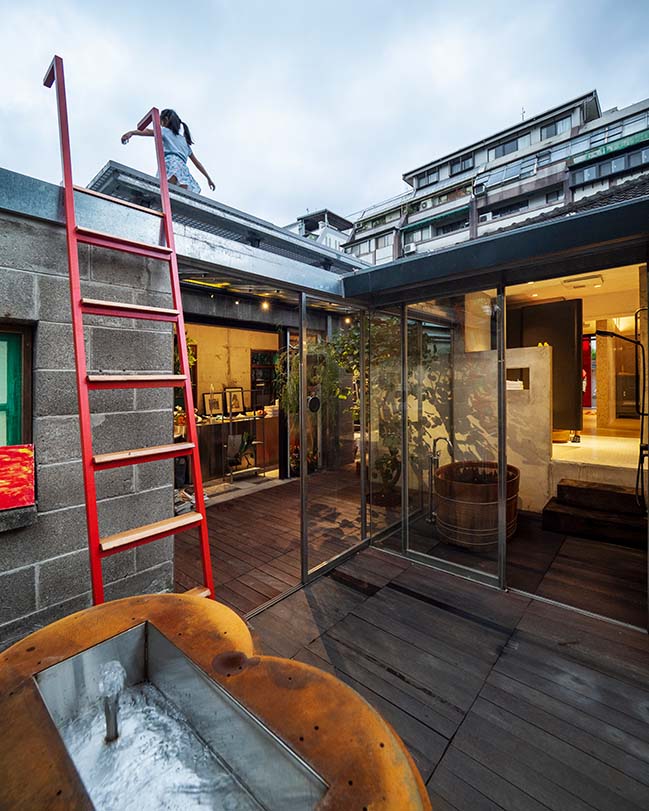
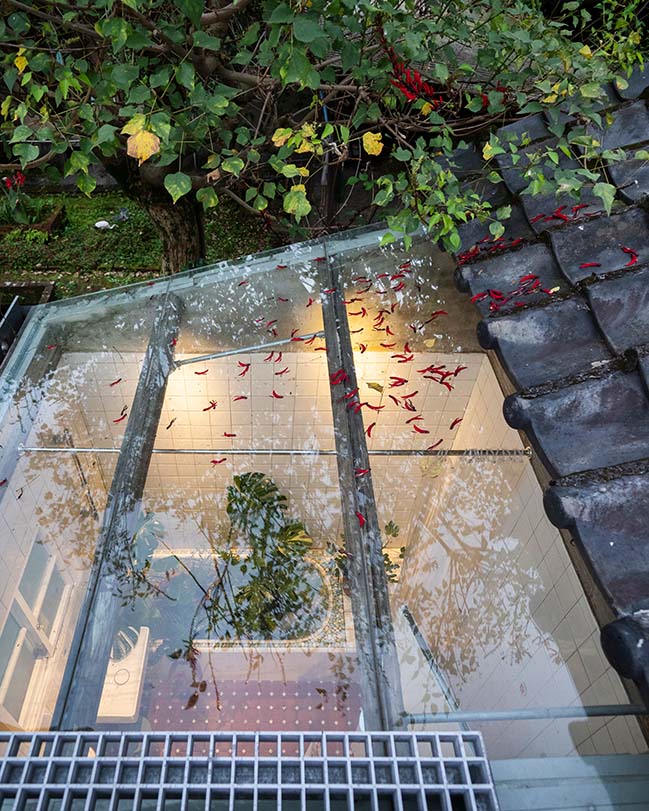
YOU MAY ALSO LIKE: H.L. House By FLOAT Design Studio
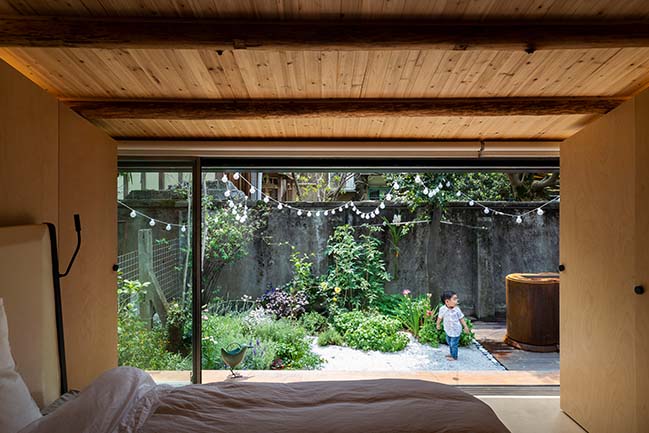
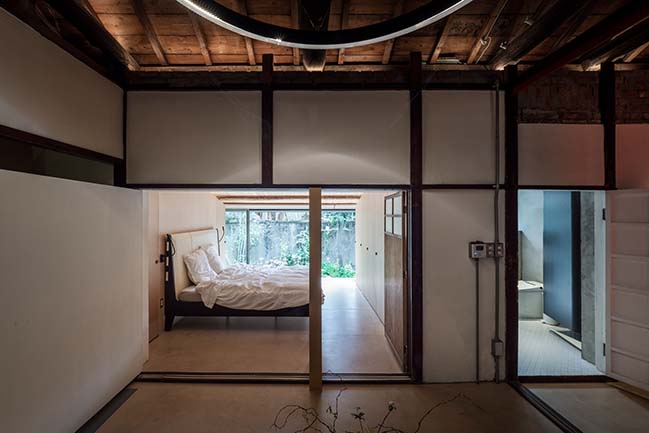
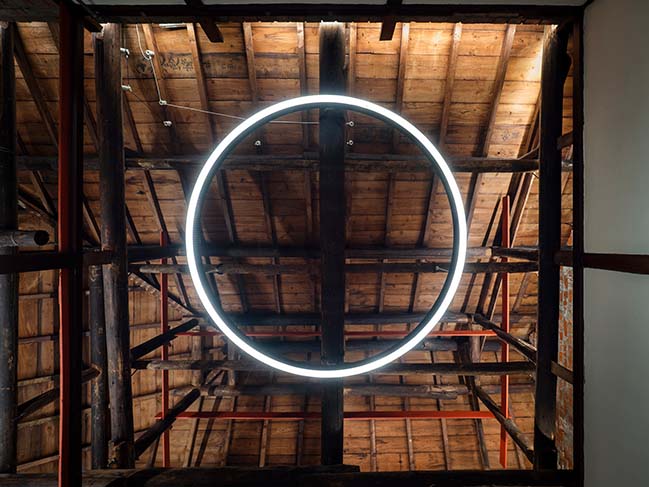
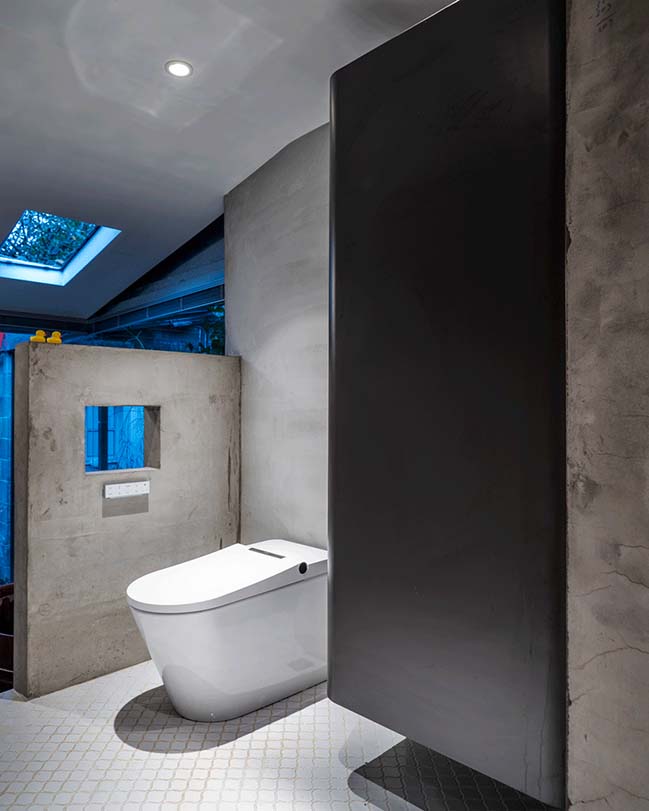
YOU MAY ALSO LIKE: Inaction By AworkDesign.Studio

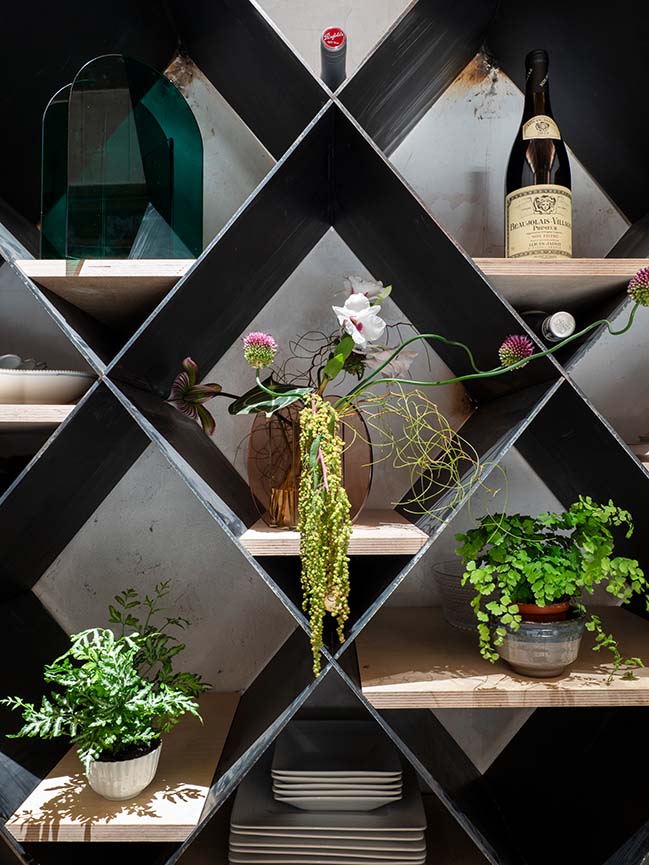

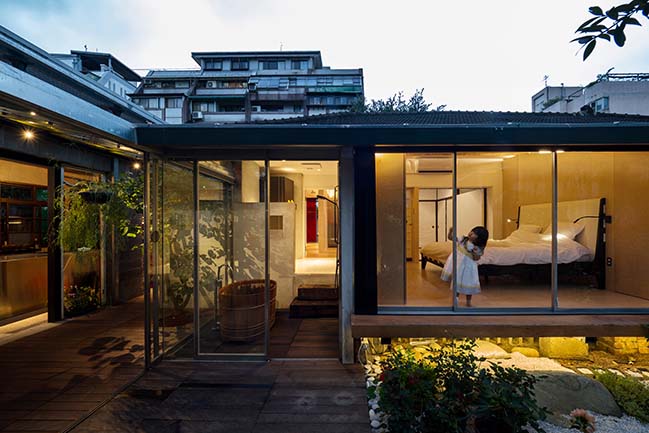
YOU MAY ALSO LIKE: Breathing Houses Taipei By ROEWU Architecture
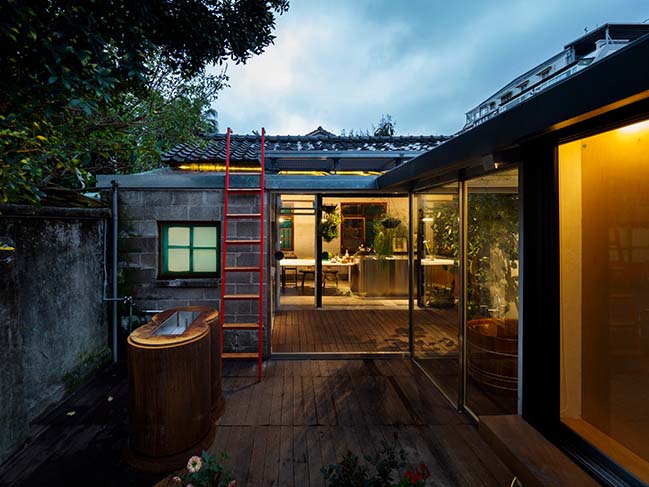
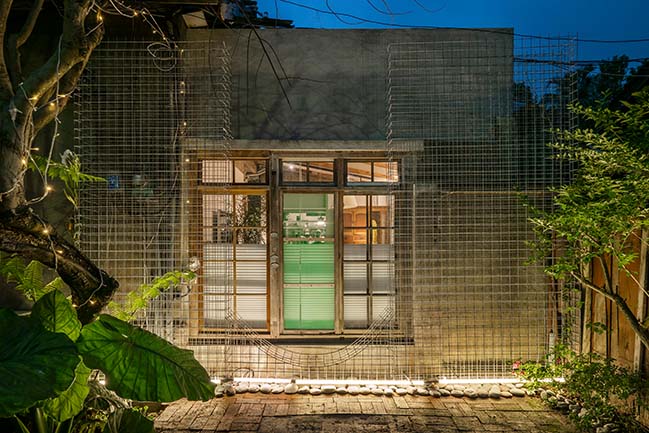
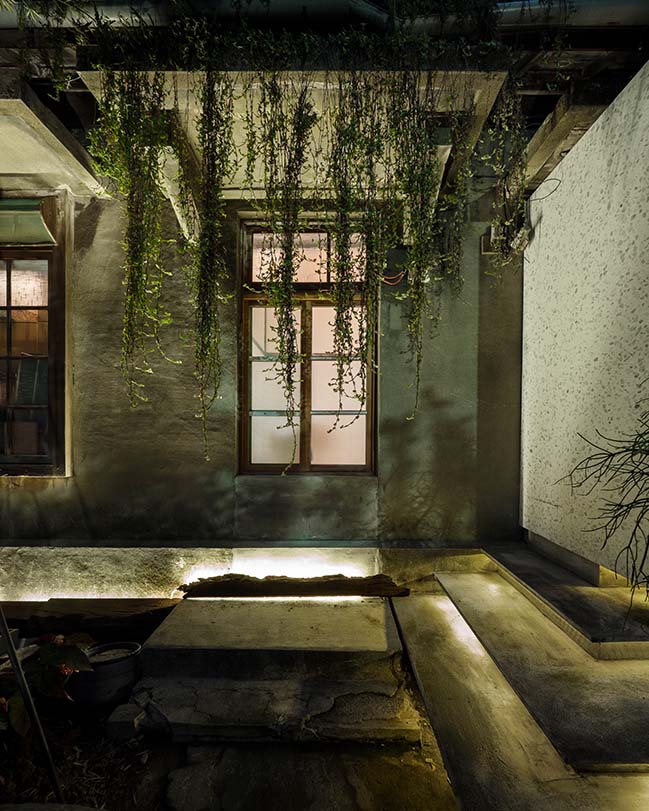
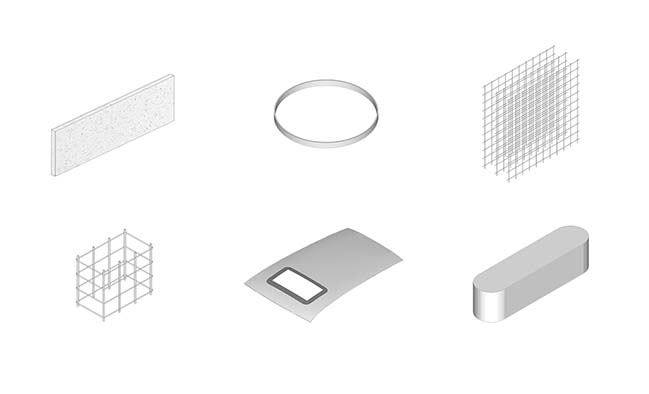
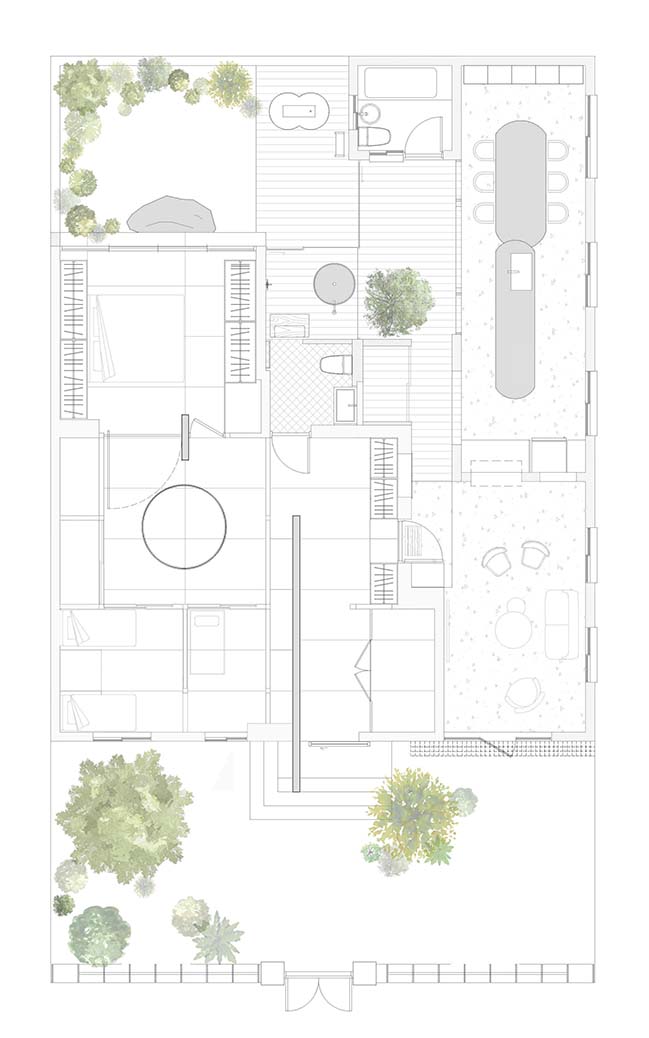
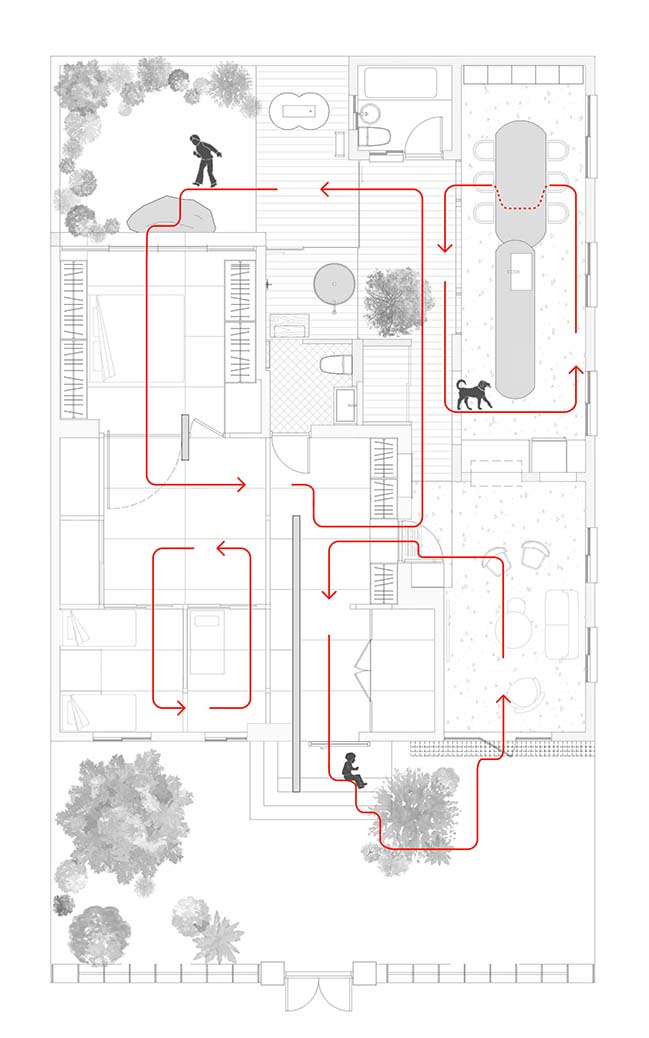
JCA Living Lab by J.C. Architecture
08 / 18 / 2019 J.C.Architecture has created a new environment in an urban world, full of possibilities, providing a safe place for a person to relax in...
You might also like:
Recommended post: Copper Blockhouse by Wutopia Lab
